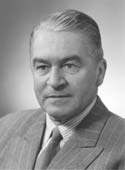 |
||||
|
|
||||
|
|
||||
| SWISS
ENGINEERS Lardy, initially working with Ritter, went on to play a significant role, through his teaching and publications, in bringing prestressed concrete to the European engineers of the immediate postwar era. He published a book with Max Ritter on the subject in 1946. While Ritter surely stimulated its publication, the systematic development of design and analysis was entirely the work of Lardy and was built on his previous publications. Ritter’s sudden death in 1946 resulted almost immediately in the appointment of Lardy as his successor. The most significant new aspect of Lardy’s early teaching was his continued reference to the aesthetics of structure, not as an isolated topic but as one integral to the engineer’s design. Although he brought that pedagogical focus to all his teaching, his most important influence was on a small but highly distinguished group of students whom he singled out to be his assistants after they had graduated. At the time, formal graduate education was not offered in European engineering schools; instead professors chose certain gifted students to be teaching assistants, research assistants, and aides to the professor’s consulting practice. Lardy counted two of the most gifted designers of the twentieth century among his assistants, Heinz Isler and Christian Menn.
|
|

